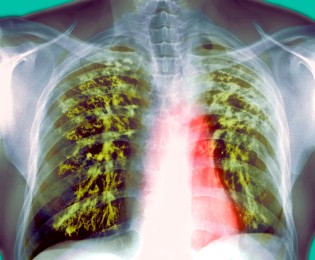Sustainable Systems for Disease Management
This post was written by Adam Whiteley, a Care Navigator at the Squirrel Hill Health Center.
One of the most valuable things I have learned so far in my year of service have been the distinctions that exist between the realms of public health and medicine. Even though these two disciplines often go hand in hand, there are very real distinctions in focus that can have a very real effect on the health of patients. At the Squirrel Hill Health Center, one of these distinctions has become quite clear in patients that have tuberculosis (TB). All new patients at the health center have a screening exam, either a skin test or a blood test to determine if they have been exposed to tuberculosis. If the test comes back positive, they are sent for a chest x-ray and other symptoms are taken into account to determine whether the patient has an active or latent form of infection.
All patients with active tuberculosis infections are referred to the Allegheny County Health Department for tracking and treatment, but all latent cases remain at the clinic. Up until this point, the patient’s situation has been and will continue to exist within the realm of the medical domain as the next step in the process is treating the latent TB infection.
The course of treatment for latent TB consists of two drugs, isoniazid, an antibiotic, and pyridoxine, vitamin B6. These medications have to be taken everyday for 6 months without a break or else the entire course of treatment must be restarted. The patient must also have blood tests done every month to ensure liver dysfunction does not result from treatment. Add to this the fact that most of the patients we treat for latent TB at the Squirrel Hill Health System do not speak English, are for the most part not well-versed in navigating the American health care system, and sometimes do not have insurance. Successfully navigating TB treatment contains a minefield of obstacles and potential roadblocks.
The question then becomes how do we ensure that patients are completing their TB treatment successfully. It is here that the shift from the medical perspective to the public health perspective occurs. Before this year, the Squirrel Hill Health Center did not have the capacity to closely track patients to ensure treatment compliance. Through my position, I have helped to introduce a system that allows patients to be tracked from the moment they have the tuberculosis test performed to the day that they complete treatment to ensure that they are completing all steps in the process. We have incorporated this system into the clinical practice and are looking ahead to create a TB-specific section in our electronic health record. In this way, I am creating a sustainable system that will aid in tracking and treating latent TB patients at our clinic long after my service term has ended. My public health efforts have worked hand and hand with the medical efforts of our clinic’s providers to ensure positive health outcomes for our patients.